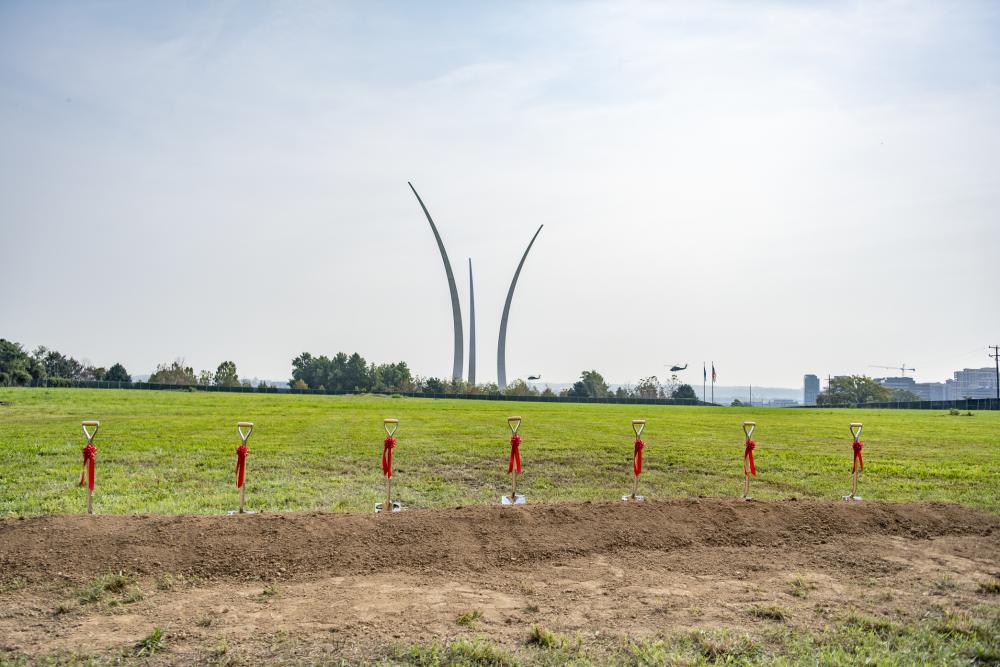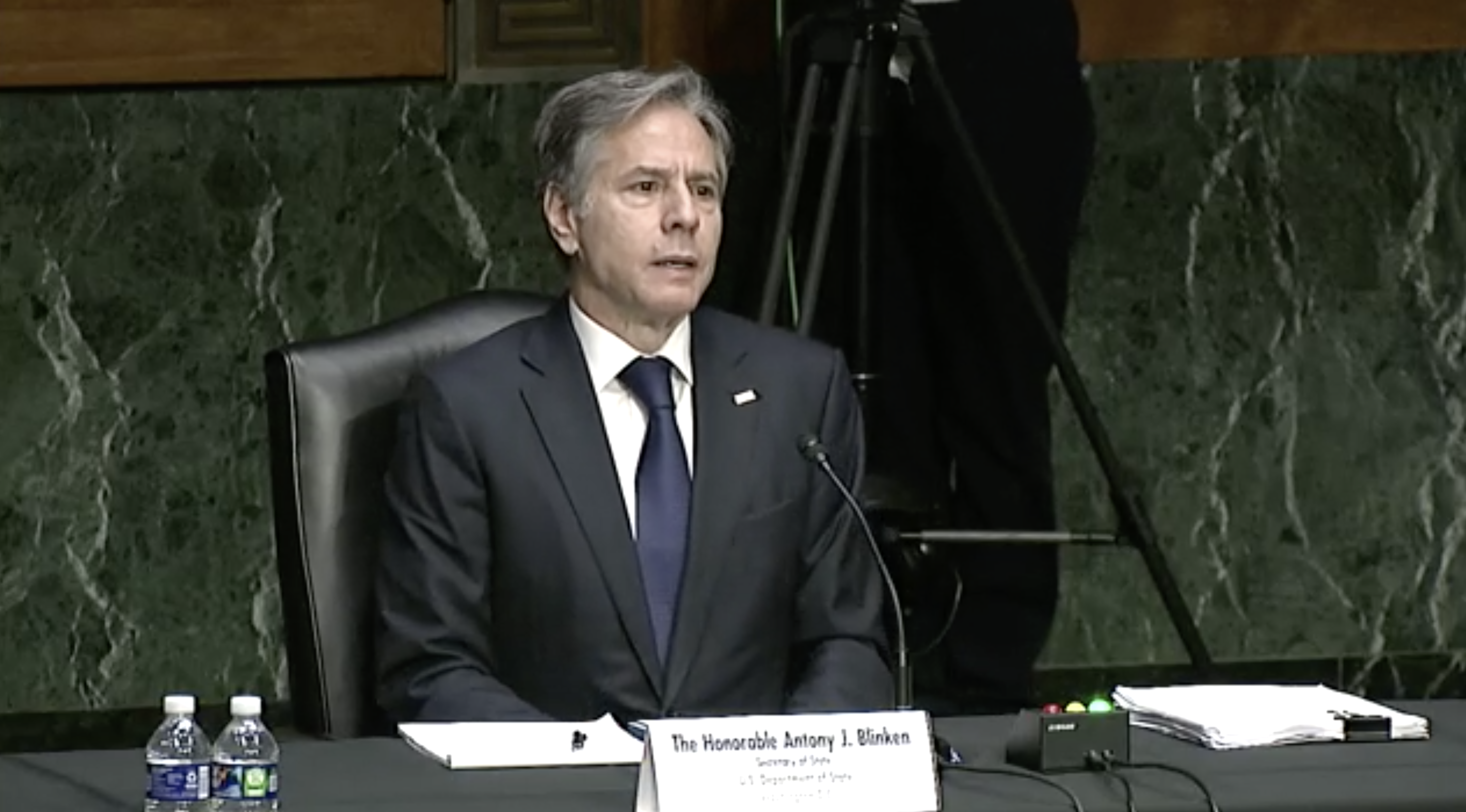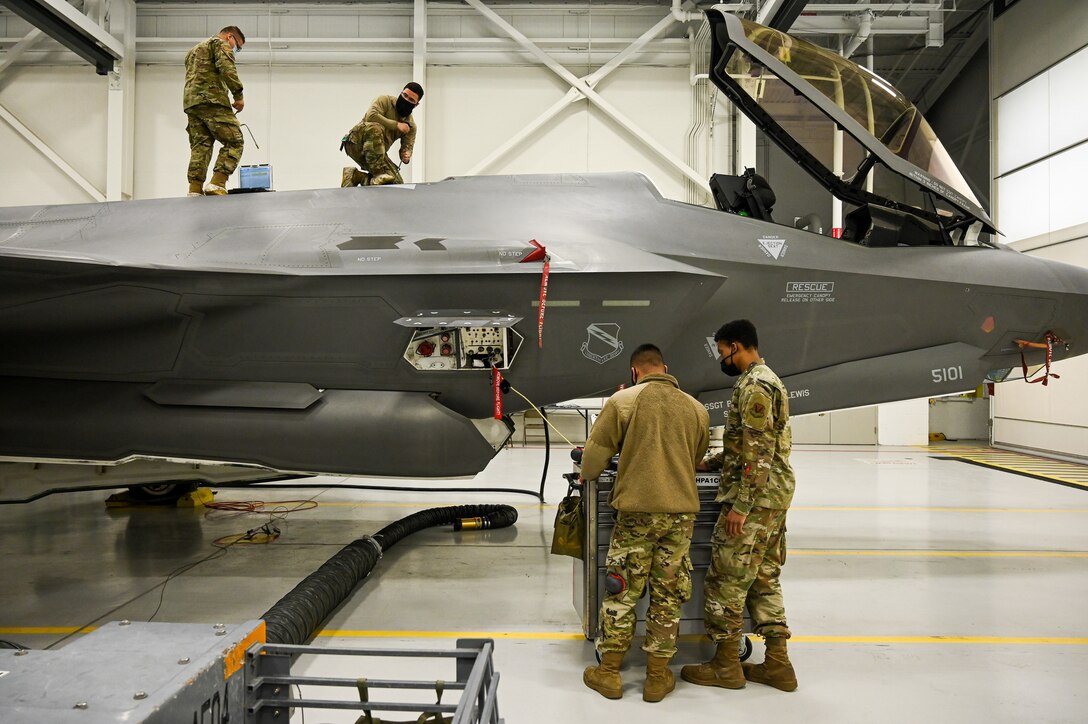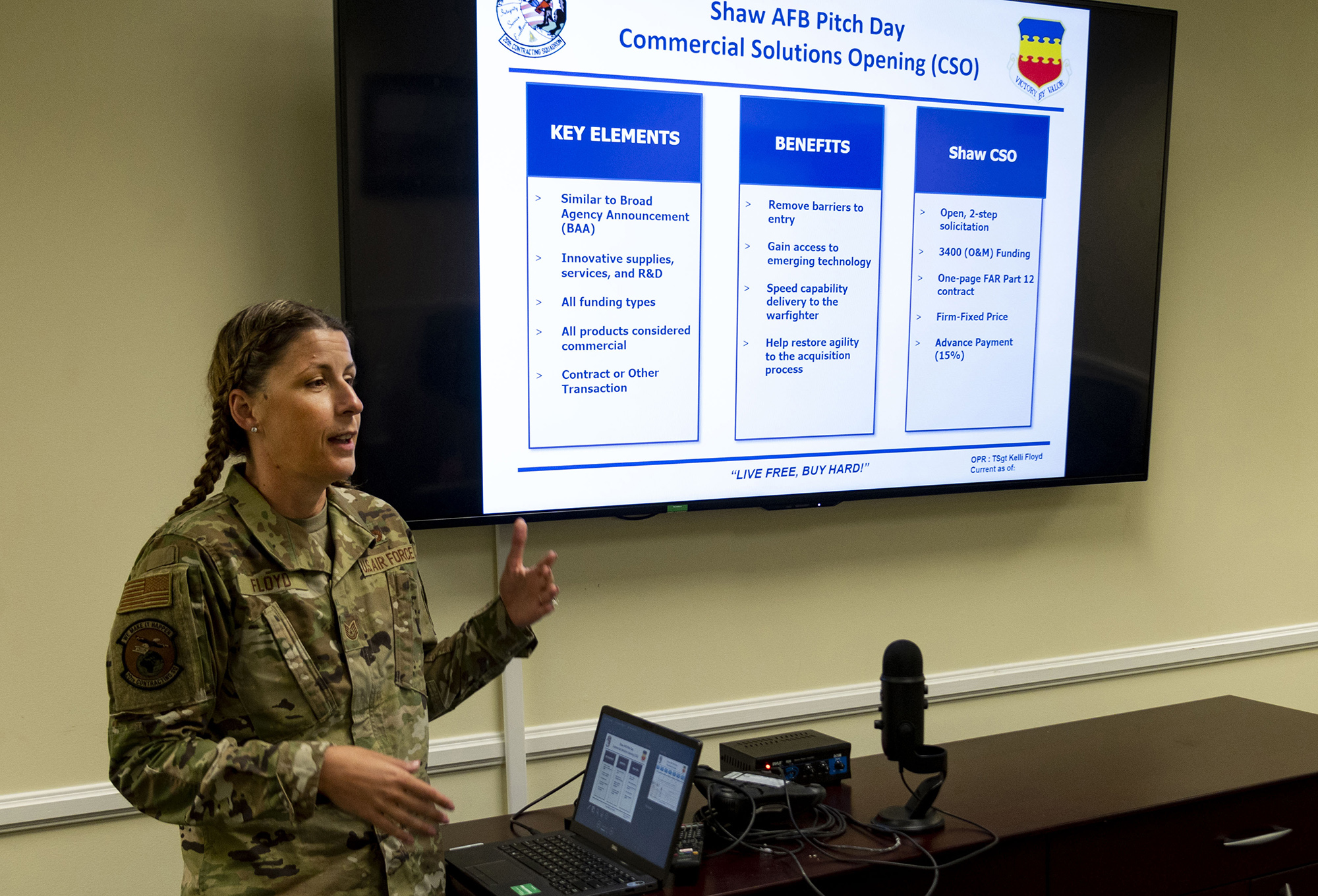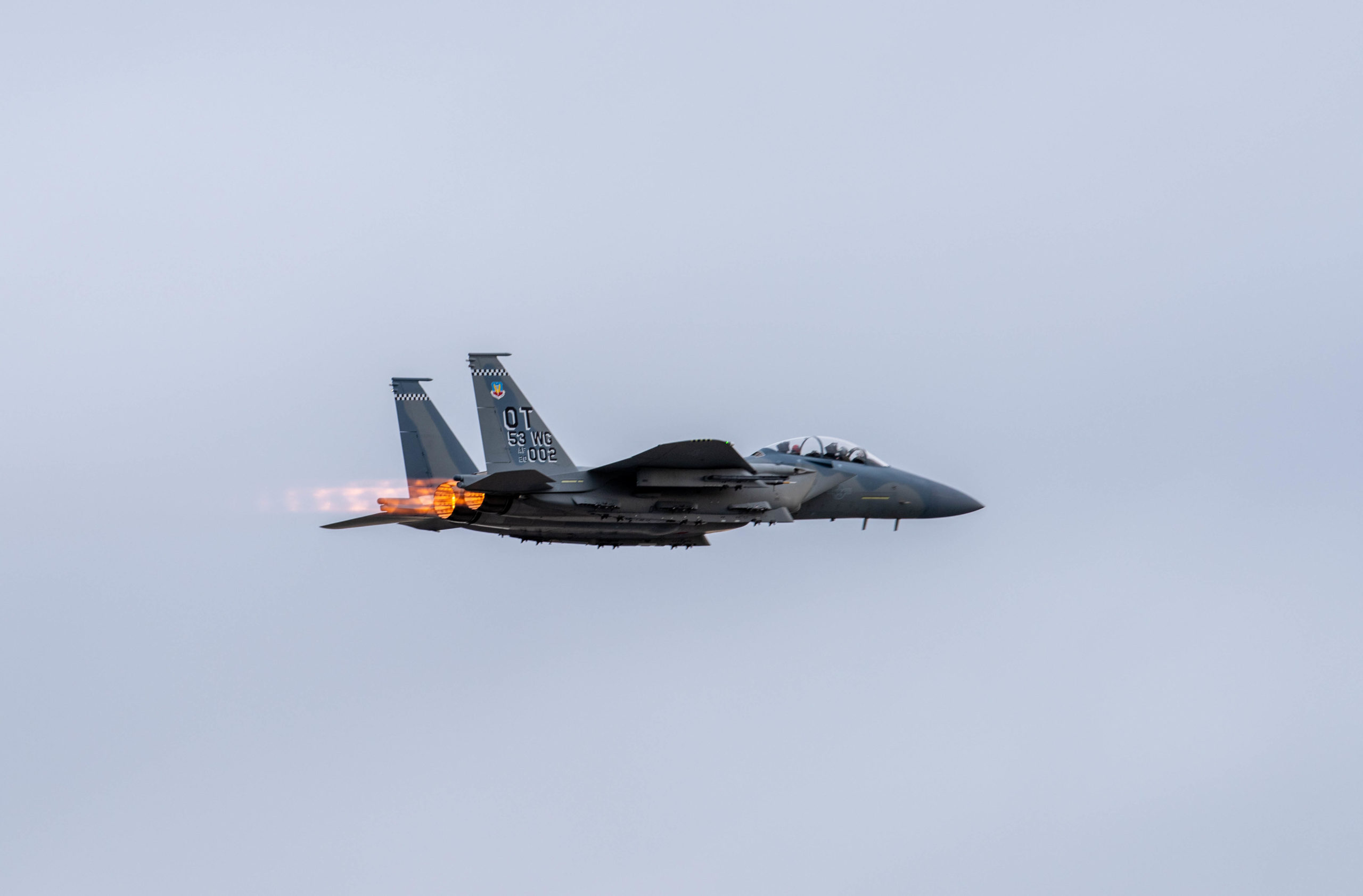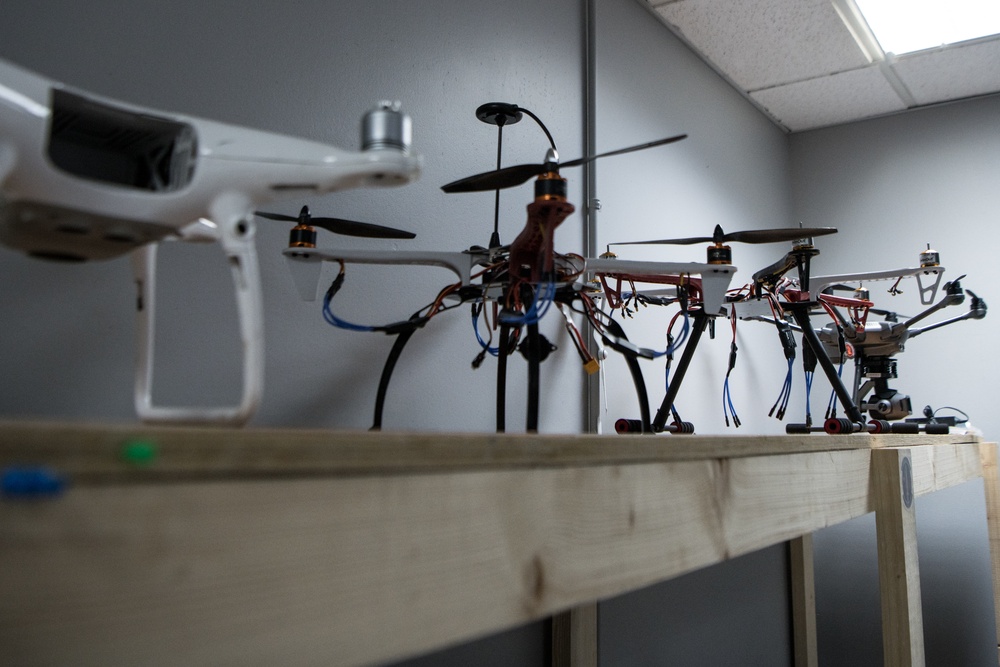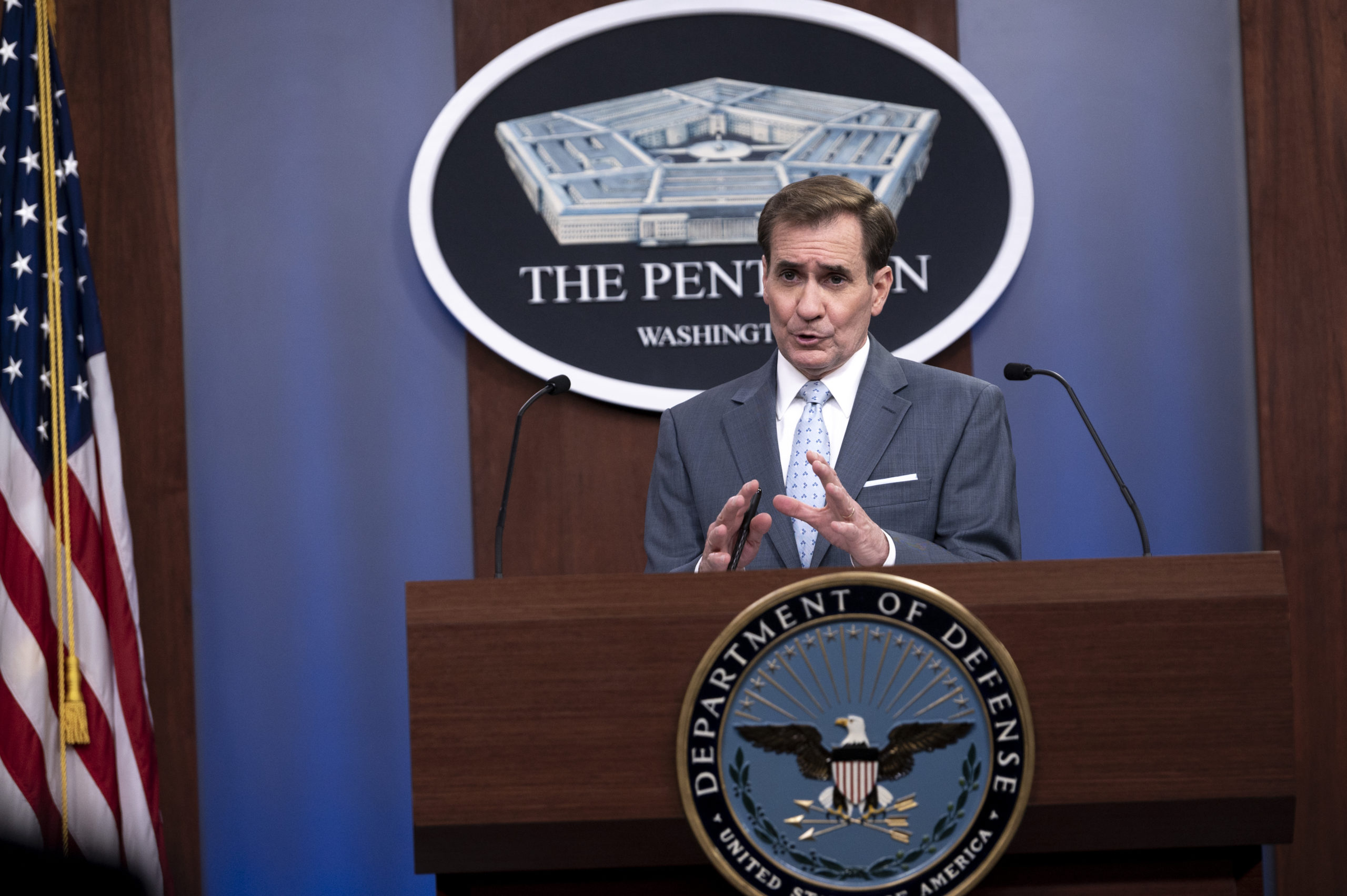The U.S. Army Corps of Engineers broke ground Sept. 14 on an expansion of Arlington National Cemetery intended to add 80,000 gravesites and to make the Air Force Memorial the face of a new southern entrance to the cemetery.
The expansion, which will include the site where the Navy Annex once stood and the slope between the Air Force Memorial and the Pentagon, will add 50 acres to the cemetery, realign roads, relocate the service complex, and incorporate access to the Air Force Memorial. Planners believe the expansion will draw thousands more visitors to the site. Officials hope the additional space will ensure the cemetery can remain active for another 150 years.
“Our fabulous Air Force Memorial will continue to shine,” said AFA President retired Lt. Gen. Bruce “Orville” Wright. “From the beginning, it was always the expectation that the Memorial would eventually be incorporated into Arlington Cemetery. This design, with the Memorial as a major point of entry, will ensure even more visitors will come and experience its soaring spires and the Airmen the site memorializes.”
The project breaks down into two pieces: the road work and the cemetery expansion, which cannot begin until the road work is at least 70 percent complete. Estimated to take six years, the expansion plan will cost about $350 million, of which the first $60 million came from the 2019 National Defense Authorization Act.
The road project will realign and replace roadways and construct new pedestrian and bicycle paths. New parking facilities and a new operations complex, to include an office building, warehouse, and maintenance bays, is also planned.
Army Secretary Christine Wormuth and Maj. Gen. Joel D. Jackson, commander of the Air Force District of Washington, attended the ceremony. Unlike most national cemeteries, which are controlled by the Department of Veterans Affairs, Arlington is operated by the Army.
Internment at Arlington National Cemetery is limited to retired veterans with more than 20 years of service; service members who were killed or wounded in action and awarded the Purple Heart Medal; decorated combat veterans awarded a Silver Star or higher; former prisoners of war; and service members who died while on Active duty. A 2018 advisory panel recommended above-ground internment for the remaining World War II and Korean War veterans who do not otherwise qualify.
An Arlington National Cemetery spokesperson said the 150-year extension of the cemetery’s operational life presumes revised eligibility criteria. Rule-making is underway, and proposed criteria are expected to be released next year.
Arlington National Cemetery hosts 25 to 30 funeral services each day and 10 on Saturdays for a total of 3,000 to 5,000 yearly burials.
